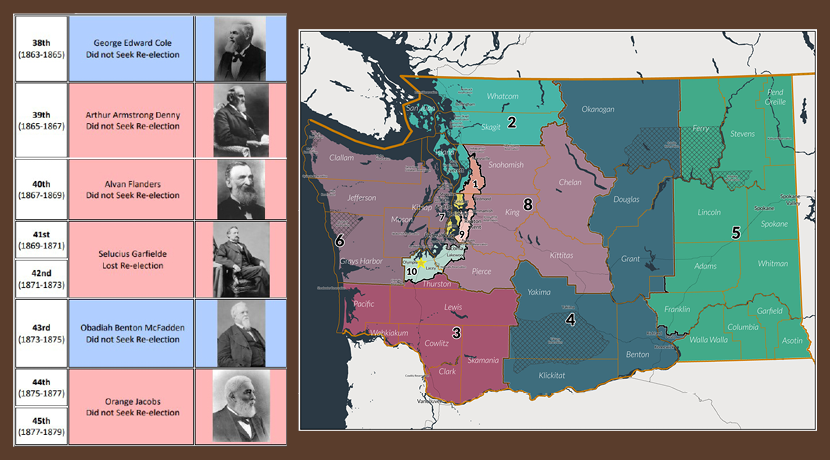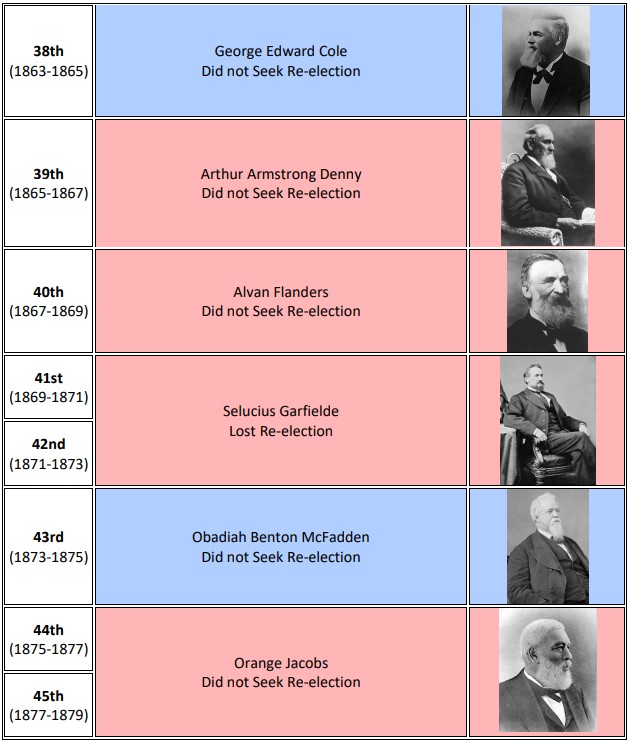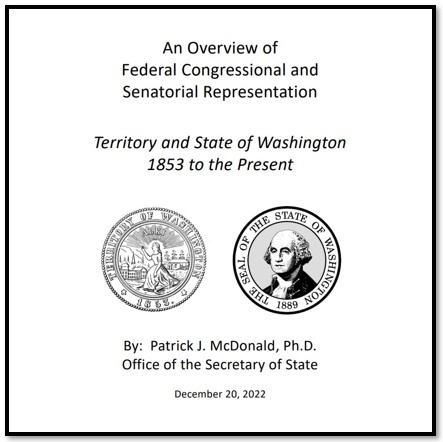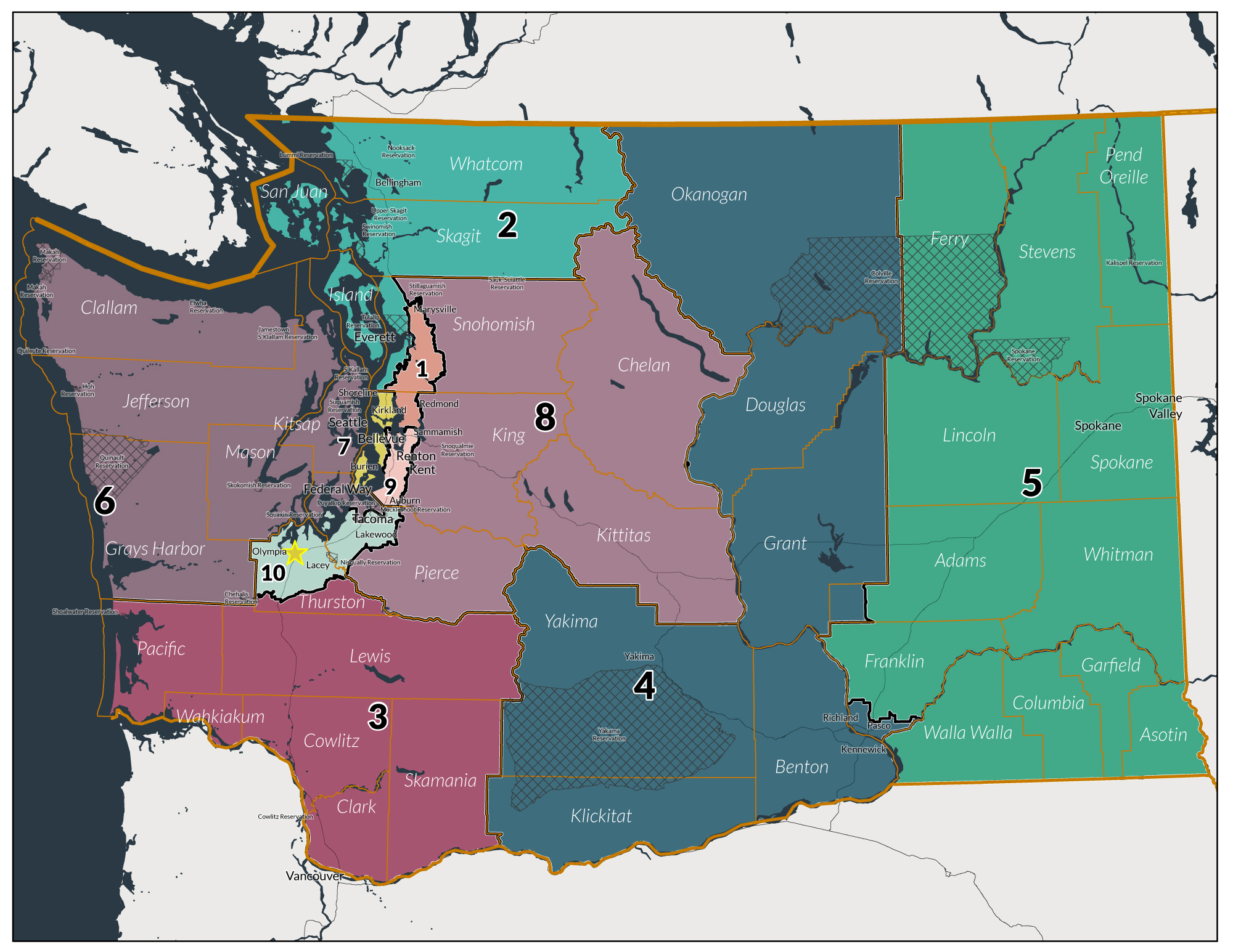
WASHINGTON STATE’S CONGRESSIONAL DELEGATION: A HISTORY AND LEGACY IN 28 PAGES
Do you ever wonder how many U.S. representatives and senators Washington (as a state and territory) has had in its 170-year history? How many of them were Republicans? How many were Democrats, or Progressives?
If you’re doing a little in-depth research, how many years did Julia Butler Hansen serve in the House of Representatives? Why did James W. Bryant’s term end?
Or, if you’re simply curious, what in the name of Orange Jacobs is a “Silver Republican”?
We’ll get to that.
Answers to nearly all these questions and more can be found in an up-to-date and easy-to-read history of Washington state’s congressional delegation, “An Overview of Federal Congressional and Senatorial Representation: Territory and State of Washington, 1853 to the Present.”
Written by Patrick McDonald of the Office of the Secretary of State, this concise, 28-page guide offers an overview of federal congressional and senatorial representation: from when Washington became a territory in 1853 to the present, complete with headshots — like a high-school yearbook!
When Washington was a territory, the voters elected an at-large nonvoting “delegate” to the U.S. House of Representatives. Delegates included James Patton Anderson, William Henson Wallace, and guys with unique names like Columbia, Selucius, Obadiah, and – yes – Orange.

Once Washington became a state in 1889, it was allotted one representative. (The first was John Wilson, whose district home was Spokane.) As the state’s population grew, it gained more districts — fewer than big states like California and Texas, but more than less-populous states such as Alaska and Montana.
Washington gained a second seat after the 1890 census. Over the next 120 years as the population grew, Washington gained eight more seats. The 10th and latest was awarded after the 2010 census.
Due to the Connecticut Compromise (aka the Great Compromise of 1787), Washington, like all states, was allotted two senators.
Unlike the representatives, the senators began serving once Washington became a state, starting with John Beard Allen and Watson Carvosso Squire, both Republicans. Today, our two U.S. senators are Patty Murray and Maria Cantwell, both Democrats. There were a few unique names in between, like Addison, Monrad, Slade, and Brockman. No Orange, however.
Fun fact: On Jan. 3, 2023, Patty Murray, who was first elected in 1992, was named President Pro Tempore of the U.S. Senate, the Senate’s second-highest-ranking official. She is the first woman in our nation’s history to serve in this very important role.

Want to learn more? The Office of the Secretary of State’s Legacy Washington has a LegacyMakers database that offers biographical information on about 660 Washingtonians past and present, including community activists and elected and appointed officials. Orange Jacobs, too!

Other valuable resources include the Biographical Directory of the United States Congress, history.house.gov, senate.gov, Wikipedia, and Google.
Oh, and a Silver Republican is a member of the Silver Republican party, which supported free silver and bimetallism. In 1896 these Republicans split from the “main” party, which supported the gold standard. In 1901, the Silver Republican party disbanded. Most of its members rejoined the main party after Teddy Roosevelt became president.
So…what’s bimetallism?

